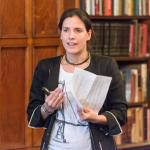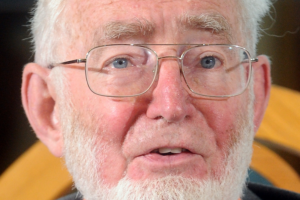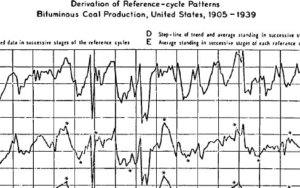
Mike Konczal explained how econ blogs have become influential in the dissemination of economic ideas, and why it matters in these times of public distrust and intense political fight over the cure for the present crisis. In such setting, there’s a huge premium for those who are able to explain complex themes and econ ideas to the public, he notes. He argues that the economic blogosphere is an incredibly open space (which some bloggers question, as noted in this post) and a mean to reach journalists and political activists. His suggestions for further improvement include the increased use of history to show whether present day issues have already and sometimes long been debated, and to understand how the choices made several decades ago have shaped our current conversations (for instance, talking about growth rather than redistribution)

The substance of Noah Smith’s talk was that blogging goes beyond bringing academic ideas to the public. He views it as a way to take the field to the public eye, with the hope that airing the dirty laundry of economists will enable them (with the help and pressure of smart outsiders) to correct research mistakes and to expose the methodological and theoretical assumptions responsible for turning economics away from real-time issues. He sees blogs as a good way to reconnect economists to the public sphere because the public is likely to enjoy the battle of ideas displayed on the econ blogosphere and because this media is consistent with an “economics-made-fun” editorial line.
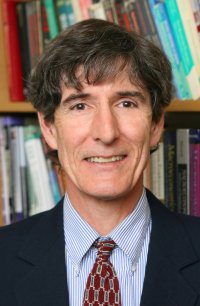
Just as the INET conference tool place, Mark Thoma published an in-depth analysis of economics blogs on the Public Sphere Forum. Thoma analyzes the reasons for the “Great Disconnect” between economists and their public mission, one loosely defined as the ability to answer important public policy questions and discuss with the public, the press and policy makers. A first reason is the rise of mathematical formalism, with the consequence that economic research was expressed in a language that non-experts could not decipher. Also, economists increasingly insisted that they should solely focus on positive issues and refrain from making some normative judgments, which in Thoma’s view inhibited policy discussions. Also responsible for the Great Disconnect is the establishment of a kind of professional pecking order where those most connected with real-time issues, government and business economists, were looked down by theoretical economists (with empiricists and applied economists standing in the middle). Finally, the break between economists and the public sphere was deepened by the theoretical economists’ interest in describing the world rather than predicting its evolution; their theories, models and econometrics were build to answer that kind of questions and were of little interest to those government economists more interested in forecasting. By withdrawing from the public sphere, Thoma warns, economists left a void filled with think thanks, self-appointed experts, “charlatans and cranks” (Mankiw’s expression), and ceased to receive feedbacks from the users of their models.
His main argument is that the development of information technology, especially blogs, is reconnecting economics to the public sphere. Indeed, the increased formalization of economics has created a huge demand for the translation of research into everyday terms, a demand economic blogs, in particular those written by “several well-know serious researchers” such as Mankiw or Hamilton are able to meet: “blogs provide a window into economics that allows the public to understand the important issues without necessarily understanding the technical apparatus that justifies the conclusions,” Thoma writes. In the wake of the development of individuals’ blogs, departments and institutes, such as the Fed, have recognized the public visibility such media could bring and have opened their own blogs. Blogs are reconnecting economists to the public by offering direct access to an accessible version of their thoughts, research and data, he then explains. They flag those economists willing to talk to journalists without fear of being misquoted (their own posts acting as gatekeepers) and bloggers are even in the process of becoming a new kind of experts, an hybrid of journalists and researchers. Since some econ blogs are read by policymakers at the Fed, the Treasury and elsewhere, economics ideas are more likely to be translated into policies. Also, academic economists have (re)discovered how much business economists’ knowledge of actual institutions (the finance industry for instance) is valuable. The organizers of the INET session on “new conservations,” Perry Mehrling and Dan Neilson, indeed intended to give a compelling example of the benefits of a renewed conversations with experts outside the academia. One invited speaker was Zoltan Pozsar, who explained how, not being an economist himself, he got interested in balancesheet approaches, aggregate household cashflows estimation and the plumbing of the financial market system. He produced a (visual, wall-size) map of the shadow banking system, and subsequently turned it into a paper.
Blogs have also changed how economics is practiced and taught, Thoma concludes. Using a comparison with the medical profession whose daily assignment is to diagnose and cure new diseases, he highlights how blogging is fostering real-time analysis and the direct application of the economist’s toolbox to account for the financial crisis.
Three features of Thoma’s argument caught my historian’s eye.
(1) This idea that economists cut themselves from policy discussions because of their insistence that they should concentrate on positive issues only is a more convincing explanation for the “Great Disconnect” than mathematical formalism. Sure, the latter prevented journalists, policy makers and the public from understanding economists’ research. But there had always been a good deal of economists willing to translate their finding into everyday words. I confess I have no exhaustive example to give. I’m awaiting further research on Samuelson’s (and Friedman’s) years of Newsweek weekly chronicles (both began in 1966), on the scope of Samuelson’s and Friedman’s support for, respectively, Kennedy and Goldwater as presidential candidates in the sixties. Also, however reluctant Solow was to appear on the public scene, he joined the Council of Economic Advisors, then chaired by Walter Heller and Jim Tobin, in 1962. He was also a close friend of Columbia sociologist Daniel Bell, who founded The Public Interestwith Irving Kristol in 1965. The Solow papers host a substantial correspondence between the two men, one in which Bell would usually try to convince Solow to write a column on such and such policy under survey or implemented by the federal government. Solow would refuse, but nevertheless thoroughly explain to Bell the pros and cons of each reform in simple terms. Understanding the role of the economist as a public intellectual in the USA and the UK in the twentieth century will indeed the subject of the next History of Political Economy annual conference, to be hold in 2012 at Duke University. What these examples show is that economists were willing to share their results but generally reluctant to do so publicly.
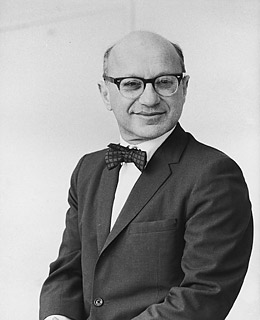
Such insistence that economists should limit themselves to deal with positive issues was spread by articles such as Friedman’s famous 1953 methodological essay, and in that respect, it is interesting to see how his own vision of policy discussions evolved throughout his life. Together with his scientific research on monetarism and his political activism embodied in Capitalism and Freedom or his Free to Choose TV series, Friedman also practiced that “art of economics” Dave Colander later argued has been lost. A first milestone in his policy reflexion was the 1948 publication of “A Monetary and Fiscal Framework for Economic Stability,” in which he argues that disagreements over policies stem from different visions of the means to reach some preferred ends rather than different choices of the ends to be pursued. He accordingly began his paper by stating that “[T]he basic long-run objectives, shared I am sure by most economists, are political freedom, economic efficiency, and substantial equality of economic power,” only to argue that in his view these objective could be realized by relying on market mechanisms within a ‘competitive order.’ He saw no contradiction between ends such as price stability and employment, efficiency and equality, since in his view a policy built for long term stability also provided the best short-run regulation of the cycle. His archive correspondence shows that several of his fellow economists, among which Keynesian Columbia professor Al Hart, found this “agreed ends” view extremely misleading. As he got caught into policy controversies, however, Friedman gradually qualified his views. He later acknowledged a possible “inconsistency” between alternative ends and a “difference in time perspective” as regards their selection, his favors going to “the long view.” During a debate with Franco Modigliani in 1977, he also conceded a second source of disagreement: “our judgment of the way in which policy is formed, operates, and develops.” Friedman’s position toward the importance of discussing institutional matters had always been ambiguous. In a 1953 paper he insisted that “economists should put politics aside in discussions of public policy,” yet in another one, published the same year, he claimed that the economist should take into account “the realities of political life” because they “in part determine what the effects of a policy will be.” For Friedman, it is well known, these “realities” were that government intervention was plagued by lags in recognition, action and effects, three good reasons to favor automatic stabilization mechanisms. Significantly, one of Friedman’s fist political moves was to reframe the discussions over (neo)liberalism as a debate over means rather than ends, which subsequently allowed him to shift part of the discussion to the scientific level (or so he said). In a 1950 conference given in Paris, for instance, he asserted that:
The major fault of the collectivist philosophy that has dominated the western world is not in its objectives – collectivists have wanted to do good, to maintain and extend freedom and democracy, and at the same time to improve the material welfare of the great masses of the people. The fault has rather been in the means. Failures to recognize the difficulty of the economic problem of efficiency coordinating the activities of millions of people led to readiness to discard the price system without an adequate substitute and to a belief that it would be easy to do much better by a central plan…. The means collectivists seek to employ are fundamentally inconsistent with the ends they seek to attain.
(2) Second, if Thoma is right to argue that the success of blogs lies in the ability of their authors to convey important research conclusions without necessarily discussing the technical apparatus which lead to such conclusions, then I think new conversations on economics are partial and incomplete. My ideas are very much sketchy here, but it’s not about econometrics results being so loose that they can virtually accommodate any policy conclusions. Rather, what I learned from reading the history of econometrics written by Mary Morgan, Philippe Le Gall, Epstein and others, is that research results cannot be separated from their production. The tools used by economists are anything but neutral. They embody part of the worldview of the economists who created them, then travelled between countries, “schools of thought” (although I don’t like the world), places, disciplines, and the values embedded in these tools are altered, but they don’t disappear. For instance, I read the fundamental disagreements between Cowles economists and Friedman (one carried in Chicago seminars during the forties and grants applications to foundations rather than in public) as a worldview rather than a technique clash merely. When he drafted his five years plan for the development of structural estimation program in 1943, Jacob Marschak, head of the Cowles Commission, titled it “Statistical Foundations of Rational Economic Policy.” A former Menshevik in Russia and a socialist activist in Germany during the twenties, Marschak had promised himself, upon arrival in the US in 1940, to refrain from any political commitment. A mathematical economist, Marschak had always believed values could be kept at the door of his science. But the purpose of his scientific program, e.g. providing a scientific basis of government intervention, influenced some of its features: the requirement that exogenous and endogenous variables be clearly identified and separated, and the specification-identification-estimation-testing procedure were framed within a worldview where state intervention was possible and desirable. Friedman’s econometrics borrowed from the NBER tradition of working with time rates of changes rather than variable levels, first difference detrending, and breaking up of times series in permanent and transitory components, and from the models he had build at the Statistical Research Group to deal with time lags and feedback loops during the war. Friedman was accordingly used to testing one-equation models which, his opponents said, exogeneity was loosely defined. (I told you, this is sketchy. Not convincing. I welcome any readings suggestion or argument which could help me work this out or burry this idea). Whatever the bottom line of this “econometrics” issue is, as a former economics student lost in current technical controversies (or lack thereof), what I’d like to find on econ blogs is not only a vulgarization of research conclusions, but understandable discussions of research techniques and methods.
(3) Third, at the basis of Thoma’s argument lies a unstated picture of what the “public mission” of economists is. Articulating explicitly what this public mission is and arguing over its substance seems to me an important prerequisite to further reflection on what econ blogging can bring to the public sphere. Let’s bring my historical characters in one last time. Marschak was very clear about what he believed the economist’s role within societies was: “I hope we can become ‘social engineers,’ he wrote in 1941. His stance is reflective of a vision much shared by social scientists in the interwar and war period: “the social engineering utopia,” which, for instance underpinned the defense of eugenics in the progressive era. Social engineers were indeed necessary to fix the plagues of the uncertain world Marschak, a Jewish socialist emigrant had experienced in the interwar Europe. Friedman’s vision of society was altogether different: The preservation of a “free society in which voluntary cooperation is to be the foundation” required a “framework for settling differences of opinion by peaceful means,” and this was what economists aimed at. As he explained to Hayek in 1974: “I myself have been led increasingly to regard scientific method as a set of conventions for resolving disagreements by work in a different tough related field, namely that of probability…[Savage] argues that the true function of statistics is not to discover knowledge but to resolve disagreement among people on subjective p.”
